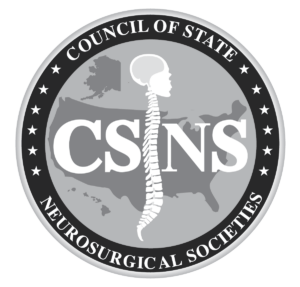Resolution

Resolution Guidelines
GUIDELINES AND HINTS FOR RESOLUTION SUBMISSION TO THE COUNCIL OF STATE NEUROSURGICAL SOCIETIES
INTRODUCTION
Resolutions are the life-blood of the CSNS. Resolutions drive the process of the organization and direct it in its interaction with the parent bodies of Neurosurgery (AANS, CNS). Formal resolution submission guidelines can be accessed in the Procedures Section of Appendix A of the CSNS Rules and Regulations. A Resolution may be generated by any member of a state neurosurgical society, the AANS, or the CNS; but actual submission of a resolution to the Council must be by a CSNS delegate (see membership section of CSNS Rules and Regulations). Resolutions that are adopted are binding on the CSNS, advisory to the parent bodies and informational to state societies.
The following tutorial was produced to assist in construction and submission of resolutions. The goal is to create a smooth and efficient process of communication between individual neurosurgeons or their state societies and the CSNS through resolution generation and submission.
GENERATING A RESOLUTION
A resolution should be generated by an individual neurosurgeon, or State Neurosurgical Society, out of a desire to positively influence the course of Neurosurgery in the socioeconomic sphere. Although often arising out of a concern about the negative impact of external or internal forces upon our discipline, it should not be used simply as an opportunity to vent, particularly when a desired outcome is way beyond the capabilities of the CSNS, AANS and CNS (e.g.: Resolved-Abolish Medicare). It therefore should extend beyond a single individual’s “axe to grind.”
A resolution should be crafted in a concise but cogent fashion. To heighten its impact, it should be well researched, well though out, well worded and explicit. It should be precise in its focus and justification. Many resolutions are tabled on the basis of vagueness or a meandering focus. The resolution must pertain to the socioeconomic world of neurosurgery. Its goals must be realistic and accomplishable (a demand for the end of all lawsuits, for example, may be desirable but is not realistic or accomplishable).
The Rationale
A resolution is constructed in two parts- the “rationale” first and the “resolve” to follow. The rationale section presents supporting evidence for the action(s) requested or desired by the author(s) in the resolution. It is essentially an argument or justification for said actions. It should list the most pertinent information that would lead to and support the action(s) requested (in the following section). It should be succinct but complete and convincing. A meandering, vitriolic, verbose, vague rationale will harm a resolution no matter how good the intentions behind it. A resolution with a minimal supporting or unconvincing rationale may similarly fail.
Wording of the rationale section follows a formalized pattern. Each supportive statement, idea, or paragraph must begin with “Whereas,”. If multiple justifications are to be presented, the end of each justification will end with “;and”. The final justification will end with ” ;therefore” to lead into the resolve section.
Example:
WHEREAS, neurological surgeons coping with managed care organizations, are often negotiating economic matters based on relative value scales; and
WHEREAS, neurological surgeons are in need of assess practice costs against individual work activity; and
WHEREAS, neurological surgeons in practices without electronic medical records and office management software are at a disadvantage in the marketplace; therefore
BE IT RESOLVED, that the CSNS develop a web-based tool that is accessible for neurological surgeons that will help them to determine on generally accepted principles the determination of total work unit per unit time and the ratio of relative value units to practice cost.
Fiscal Note
The final step in the preparation of a resolution is the fiscal note. Here the author is asked to assign an estimation of the cost of enacting their resolution. In the past the fiscal notes have been somewhat fanciful. We ask that some good thought is put into this note as it essentially acts as an initial budget. Having a well-designed action plan should greatly facilitate the calculation of a budget. If the projected cost is extreme, a plan for its acquisition and/or generation should be included in the resolves.
Final Thoughts on Resolution Preparation
The CSNS can be considered the socioeconomic conscience of neurosurgery. The twice yearly assembly of its members is essentially Neurosurgery’s town meeting. It is wonderfully democratic and driven by Neurosurgery’s “rank and file.” The agenda is set by the submitted resolutions. The better the resolutions, the better the agenda, the more productive the meeting. Here is the opportunity for every neurosurgeon to participate in the process of organized neurosurgery. Here is an amazing opportunity to affect positive change.
Go ahead, generate a resolution. Make sure it is well written, well thought out, concise, complete and goal oriented. Research and vet it. Bring it to your state society and get it submitted. It is o.k. to be controversial but you better make it to the meeting “loaded for bear” in order to defend it. Have fun being part of the solution!
EXAMPLE OF A WEAK RESOLUTION (fictitious)
Whereas, I have been sued three times in one year over ACDF cases; and
Whereas, 3 separate witnesses from my own state testified against me; and
Whereas, my state neurosurgical society and State Medical Society took no action to intervene on my part; therefore
Be it resolved, that the CSNS mandates that neurosurgeons are forbidden to testify against other neurosurgeons from the same state or from within a 250 mile radius; and
Be it further resolved that the AANS and the CNS and the ABNS offer stress counseling for members sued on multiple occasions within a set period of time; and
Be it further resolved that the CNS and AANS creates a list of disease specific expert witnesses (e.g. spinal fusion, brain tumor, aneurysm, trauma etc) who can be sent to defend surgeons who truly believe they are innocent but appear to be facing a hopeless situation due to the legal climate of their state and the inadequacies of their parent hospital, and who are willing to do the testimony without charge.
Fiscal note: $50
Critique: Well, most of the statements are actually concise and follow the correct format. Some of the concepts and concerns may indeed be legitimate. Perhaps we should discourage expert testimony within the same medical market. Perhaps we should keep a file of potential expert witnesses. But the resolution is flawed on multiple levels. It is overly personalized, it is asking for multiple somewhat unrelated actions. It is asking for actions that cannot be accomplished by the named organizations (the CSNS cannot mandate expert witness testimony behavior for example). It wanders excessively in the final resolve. It is not particularly well worded and certainly not well thought out or vetted. The fiscal note is random. Some of the concepts, however, if worked out and researched may have had some merit.
EXAMPLE OF A SOUND RESOLUTION
WHEREAS, several states and individual hospitals have defined various policies and procedures in regard to the determination and pronouncement of brain death and there are no “standard” or accepted guidelines; and
WHEREAS, the differences in these various policies involving the determination of brain death have provided an ongoing source of confusion among neurosurgeons, other physicians, and health care professionals; and
WHEREAS, the procurement of desperately needed organ donation is often delayed by the confusion surrounding the pronouncement of brain death, especially when the brain dead patient had been treated with barbiturates; therefore
BE IT RESOLVED, that the CSNS request that the AANS and CNS work with the CSNS in the creation, publication and distribution of “Guidelines for the Determination of Brain Death in Adults and Children”; and
BE IT FURTHER RESOLVED, that as part of these Guidelines, a “tear out” form should be available (for adults and children separately), so that the copying of this form onto Hospital/ University letterhead, could be done, in order to encourage more “standardization” of the determination of brain death; and
BE IT FURTHER RESOLVED, that the CSNS request that the AANS/ CNS support production of plastic “pocket cards” detailing the exact criteria for determination of brain death, similar to those available for ASIA Classification, for the education of and utilization by neurosurgeons.
SUBMISSION AND BEYOND
Upon completion a resolution can be submitted by mail or though the CSNS website. It must be submitted no later than six weeks prior to the CSNS meetings which occur just prior to the annual CNS and AANS scientific meetings). Exceptions for late resolutions are made only under exceptional circumstances (See CSNS Rules and Regulations).
The resolutions are distributed to all CSNS delegates prior to the meeting and are assigned to one or more committees for scrutiny and discussion. Often, the chairperson of such a committee will contact the author(s) and further plumb the resolution’s intent and the issue(s) raised.
At the CSNS meeting appropriate committees meet and discuss at length the resolution- its merits and deficiencies. They will decide whether or not to endorse the resolution or perhaps recommend revision.
Later the same day at the first Plenary session the resolution will be presented to the assembly and Reference Committee and testimony will be taken as to whether the resolution should be adopted. The author or a representative should be at the session to fully defend and advance his or her agenda. Basically, anyone in attendance can offer testimony.
Hearing the testimony is the Reference Committee (make up outlined in the CSNS Rules and Regulations). After initial testimony is given on all resolutions the Reference Committee meets and debates the merits of the resolution and decides whether to recommend action on the resolution. They may revise the resolution to make it more acceptable in the process.
The following morning the state delegates meet in their four geographic Quadrants while the AANS and CNS appointed delegates meet separately and each group discusses the written recommendations of the Reference Committee and comes to a decision about what action to take (e.g. support, amend, defeat, take no action as a quadrant). At the subsequent plenary session the Reference Committee presents its recommendations about each resolution (e.g. Adopt as submitted, Adopt as amended, Defeat). The assembled delegate’s then debate the resolution as presented as well as any revisions or amendments that may be offered. When majority consensus is reached regarding the resolution’s exact wording it is then finally voted upon and is either defeated, accepted, tabled or referred to committee for further refinement.
If you have any further questions or comments, please go to our web site at www.csnsonline.org and click on contact us. We look forward to seeing you at the next meeting!
Respectfully Submitted,
Gary Simonds, M.D.
Randy Smith, M.D.
Joseph S. Cheng, M.D., M.S.



